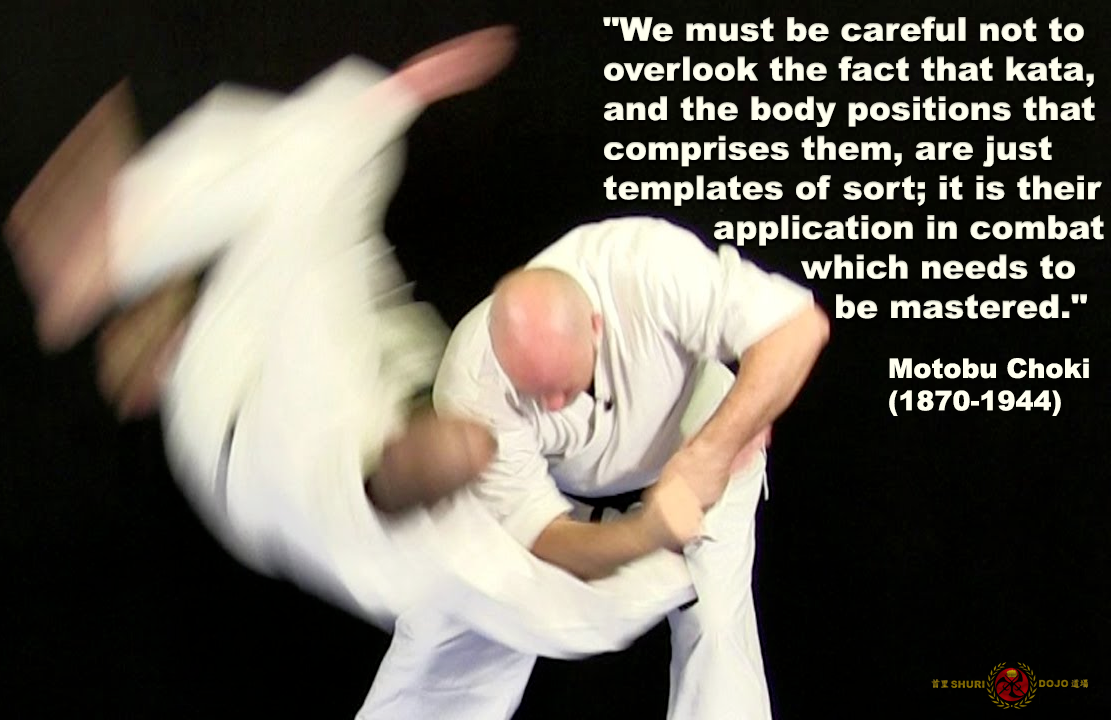
“We must be careful not to overlook the fact that kata, and the body positions that comprises them, are just templates of sort; it is their application in combat which needs to be mastered.” – Motobu Choki (1870-1944)
.
The term “bunkai” (分解), meaning ‘disassembly’, does not refer to a technique of any kind. It is a process of analysis, typically associated with taking something part. Oyo (応用) is the application of that analysis.
.
The majority of today’s karate training revolves around techniques developed for use in the sporting environment. The original karate techniques, as recorded within the kata, are for use in real situations against violent and untrained attackers.
.
When practicing kata, and its relative “bunkai”, many practitioners view the kata in its entirety, only seeing the ‘whole’, and not the individual principles and techniques within the kata. They try to ‘disassemble’ the whole thing, and try to place each movement in one continuous stream of techniques.
.
Not only do the kata provide techniques, more importantly, they also include the principles upon which the techniques rest. The key thing is to understand ‘why’ the techniques work. Principles are far more important than techniques. Why?…. Because principles can be applied in an infinite number of ways, but techniques are very specific, and hence limited.
.
If you only look for specific techniques, you will NOT be able to apply them should anything change. Grasp the principles and you will be able to adapt any technique – in line with the principles upon which it rests – to be of use in an infinite number of situations.
.
Karate was developed to be complete and effective method of civilian self-defense. The founders of our art were able fighters who fully understood how real fights occurred. If you ignore the methods included within the kata, then you are only practicing a very small percentage of the karate syllabus. The commonly used techniques (kicks & punches) take up only a small percentage of the information available.
.
I think that much confusion comes from many karate practitioners believing that the technique must closely resemble the movement in the kata (it looks like a punch therefore it must be a punch). They then try to make a practical application, or real-life technique to make that “bunkai” (remember ‘Oyo’ is the application) work.
.
If, instead of thinking of “bunkai” as several techniques strung together, practitioners should think in terms of its direct translation; the process of analyzing. Then they’d realize that all techniques, pragmatic and practical, can be found in the kata via that process.
.
It is all in there. Understand the combative principles contained within kata and you will find that you are able to extract a myriad of techniques applicable for self-defense. Use “bunkai”, to extract the information and apply the resulting techniques in “oyo”. Don’t place kata on the back-shelf thinking it is not relevant today, or use kata just to pass your next belt level. There is so much more.
.
Kata, IS the heart of karate. ![]()
![]()
.
.
![]() Photo credit: With thanks to Iain Abernethy
Photo credit: With thanks to Iain Abernethy
.
